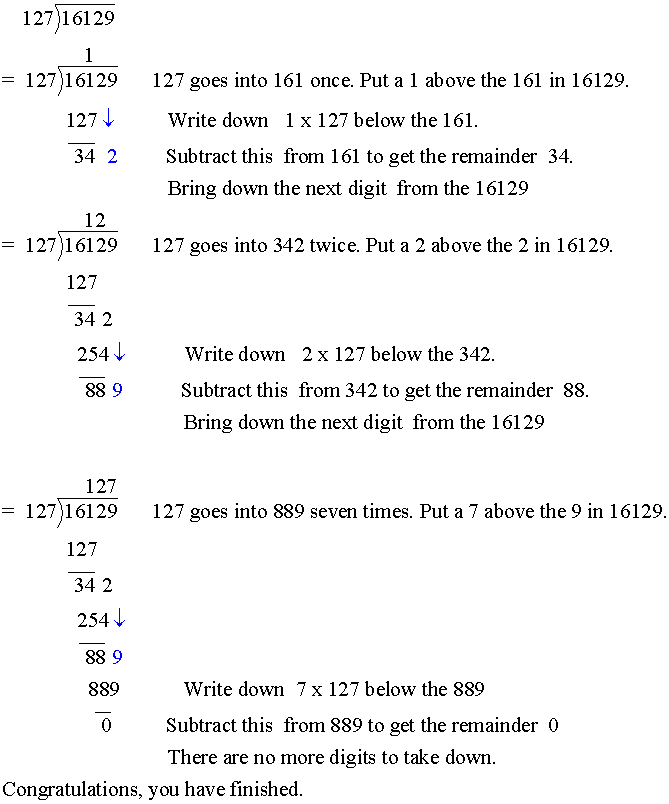Base 10 Arithmetic
Place Value
T H U .t h th
The decimal number system has a base of 10.
Every time a digit moves to the left, it increases in size by a factor of 10.

Examples

102 = One hundred, no tens, two units.
This is read one hundred and two .
3300 = three thousands, three hundreds, no tens, no units.
This is read three thousand, three hundred.
Zeroes are put in as place holders.
1023020 is read one million,twenty three thousand and twenty
Zeroes are put in as place holders.
The decimal point is always next to the units part of the number and only needs to be shown if there is a decimal part, or if the number is represented to a given number of decimal places.

Every time a digit moves to the right, it idecreases in size by a factor of 10.
Examples

102.35 = One hundred, no tens, two units, 3 tenths, 5 hundredths.
This is read one hundred and two point three five.
3020.020 = three thousands, no hundreds, two tens, no units, no tenths and two hundreths.
This is read three thousand and twenty point zero two.
Note: 3020.020 = 3020.02 = 3020.0200000
The zeroes at the end , after the decimal point, do not matter.
Example
Which number is larger, 45.205 or 45.5 ?
45.5 is larger than 45.205 , since there is a 5 in the tenths column.
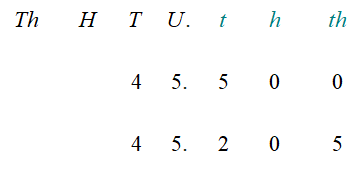
x 10 x100 x1000
- Multiply by 10 - Move all the digits one place to the left.
Examples
102.35 x 10 = 1023.5 10352.3577x 10 =103523.577 30 x 10 = 300 50230 x 10 = 502300
- Multiply by 100 - Move all the digits two places to the left.
e.g 102.35 x 100 = 10235 10352.3577x 100 =1035235.77
30 x 100 = 3000 50230 x 100 = 5023000
- Multiply by 1000 - Move all the digits three places to the left.
e.g 102.35 x 1000 = 102350 10352.3577x 1000 =10352357.7 30 x 1000 = 30000 50230 x 1000 = 50230000
÷ 10 ÷ 100 ÷ 1000
- Divide by 10 - Move all the digits one place to the right.
e.g 102.35 ÷ 10 = 10.235 10352.3577 ÷ 10 =1035.23577
30 ÷ 10 = 3 50230÷ 10 = 5023
- Divide by 100 - Move all the digits two places to the right.
e.g 102.35 ÷ 100 = 1.0235 10352.3577 ÷ 100 =103.523577
30 ÷ 100 = 0.3 50230÷ 100 = 502.3
- Divide by 1000 - Move all the digits three places to the right.
e.g 102.35 ÷ 1000 =0.10235 10352.3577 ÷ 1000 =10.3523577
30 ÷ 1000 = 0.03 50230÷ 1000 = 50.23
+ Addition
When we add numbers, we are adding up the totals in
each of the units, tens, hundreds etc columns.
Since base 10 only allows the single digits 0 to 9, any extras
are carried forward to the next column.
Examples
113 +65 =178 224 +102=326 7+6=13 27+6=313=33
To add numbers together, it is easier to write them out underneath each other.
Start from the units column. Make sure that the numbers stay in line !


- Subtraction
To subtract two numbers,
- Line them up, placing the first number on top and the second number underneath.
- Keep the digits in line, matched from the units.
- Then do top number subtract bottom number.
To check your answer
mentally add it to the bottom number.
You should then find the top number.
Examples
Calculate a) 178 – 65 b) 326 -102
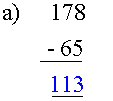
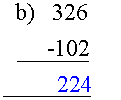
check 113 +65 =178 ![]() 224 +102=326
224 +102=326 ![]()
Problems often occur when the bottom digits are bigger
than the top digits.
The temptation then is to switch to bottom take top.
This is wrong.
Example
The solution to the sum "Calculate 123 -89"
is often given as
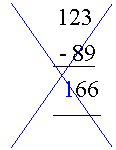
This is clearly incorrect, since adding the
answer to the bottom number gives
166 +89 =255
There are many methods available to find the correct solution.
Decomposition
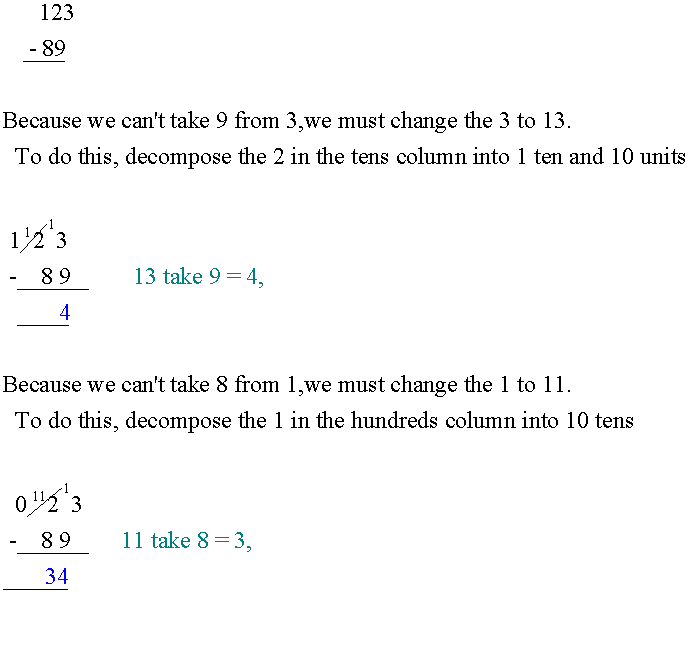
check 34 +89 =123 ![]()
Subtraction by addition
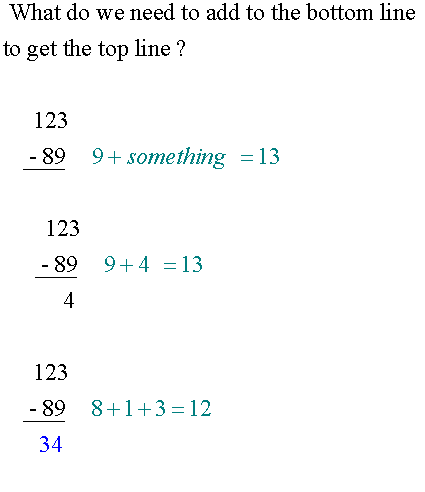
Equivalence
As long as the same thing is done to both numbers, the original sum can be changed into an easier one.
123 – 89 is the same as 124 – 90, since 1 has been added to both numbers
124 -90 = 34 so 123 – 89 =34
Borrow and payback
This is based on a combination of equivalence
and decomposition.
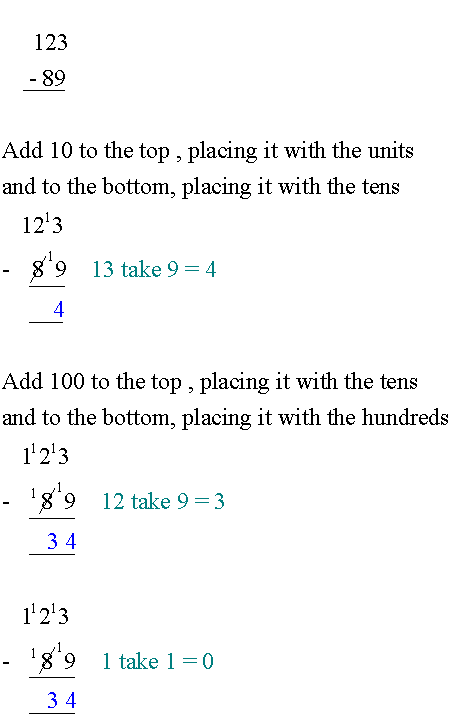
X Multiplication
Twenty times table
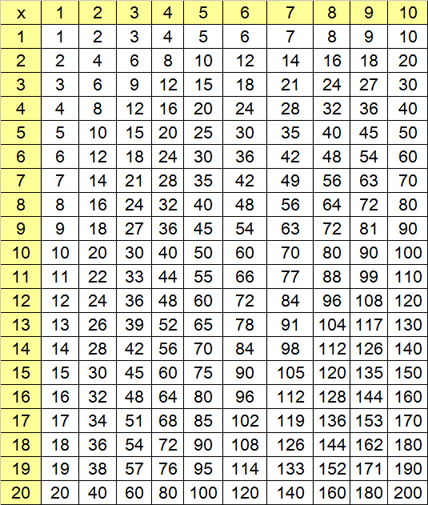
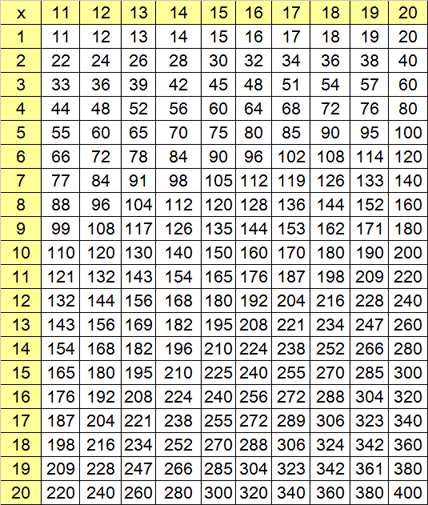
18 x 17 = 306
5 x 30 = 5 x (3 x 10) = (5 x 3) x 10 = 15 x10 = 150
Then
- Times the top line by the bottom right hand number.
- Take a new row. Start with a zero for each place moved ( HTU etc)
- Times the top line by the next bottom number.
- Keep going until all bottom numbers have been used.
- Add the rows together.
Examples
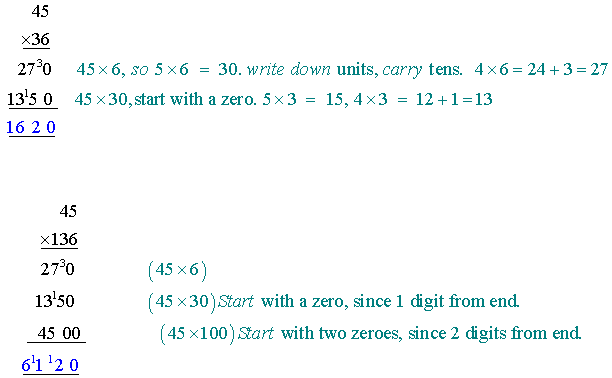
Decimal Multiplication
To multiply decimals, write them down underneath each other.
Then
* Ignore the decimal point .
- Carry out sum as above.
- Count the number of decimal digits.
Starting at right hand end of answer, count that number of digits to the left.
Place decimal point
Example

Egyptian multiplication
With this method, you only need to be able to double numbers and add.
ExampleCalculate 17 x 27
First, set up a table
To complete the table, double each entry
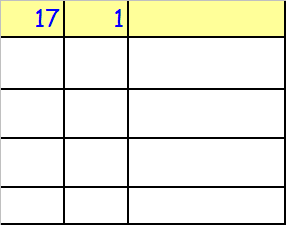
This table will now allow us to find our answer by adding the relevant entries together.
27 = 16 +8 +2 +1
so adding these entries will give
17 x 27 = 272 +136+34 +17 = 459
Example
Calculate 45 x 36
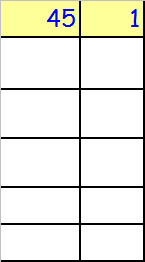
45 x 36 = 1440 +180 =1620
Grid Multiplication
This method is often used in primary school.
It basically breaks the numbers down into a grid,
then the individual components are multiplied and finally added together.
Example
45 x 36
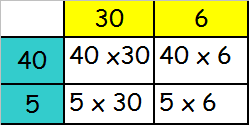
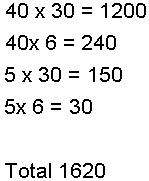
Gelosia Multiplication
This is a method from the middle ages.
Draw a grid, complete with diagonals.
Multiply the individual components, putting any tens above the diagonal.
Add up each diagonal
Read off the answer.
Example
45 x 36
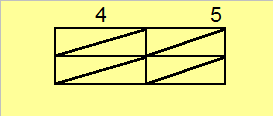 Answer 45 x 36 = 1620
Answer 45 x 36 = 1620
4 x 3 = 12, so write 1 above the diagonal and 2 below.
Complete for the rest.
Add up each diagonal.
Don’t forget to carry if necessary!
Sometimes this method is written the other way:
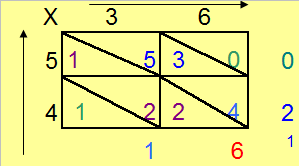
÷ Division
Short Division
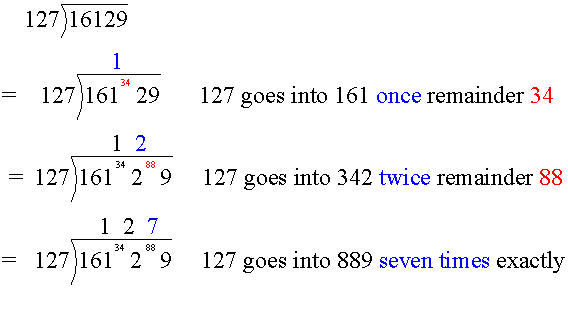
Tip : First write out the ten times table
for the number you are dividing by, or use the Egyptian multiplication method shown above.

Dividing a decimal
Divide as normal. Instead of writing down a remainder, put a decimal point in the answer ( in line with the question) and put a zero after your remainder.
Then keep on going until you have no remainders left, or have reached a suitable point.
For an answer to 3 decimal places, work it out to 4 decimal places first.
Example
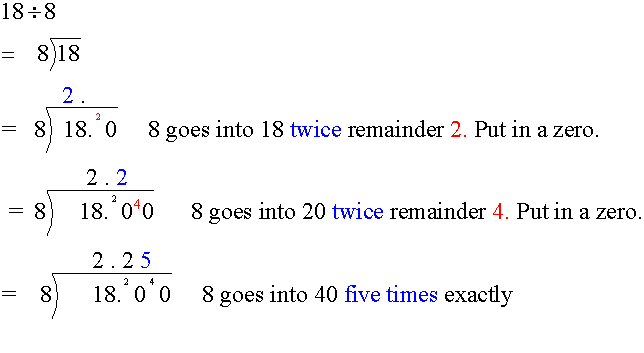
Dividing by a decimal
Examples
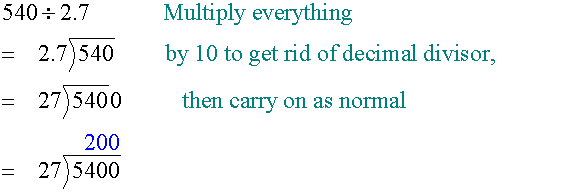
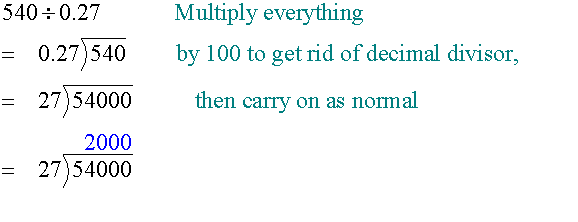
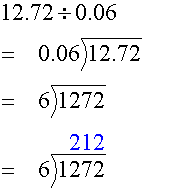
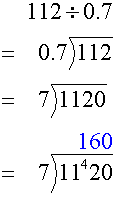
Long Division
Example
